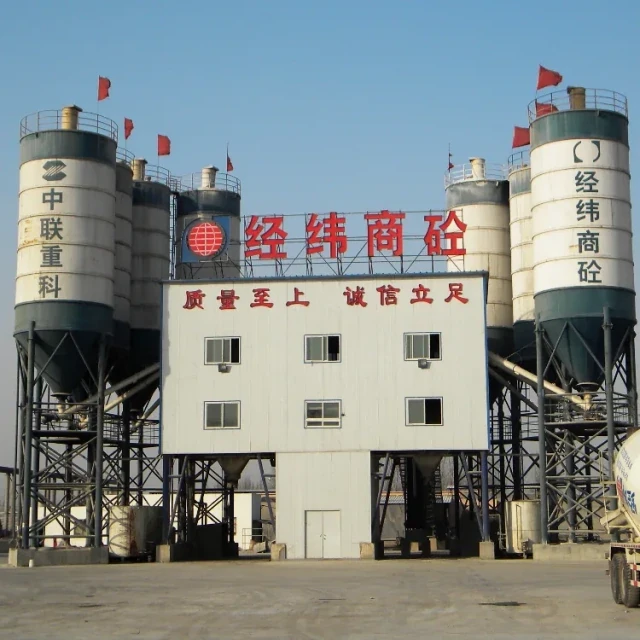Introduction
Concrete batching plants rely on precise sensor data to maintain quality and efficiency. Yet frontline workers often struggle to interpret diagnostic signals amid dust, vibration, and moisture interference. This guide transforms theoretical knowledge into actionable protocols, helping teams:
- Decode ambiguous sensor behaviors using intuitive troubleshooting
- Prioritize circuit board inspections at mixing stations
- Validate hunches with measurable data
- Extend equipment lifespan through environmental mitigation
Aligned with Garlway's expertise in industrial machinery, we focus on real-world implementation—not textbook concepts.
Intuitive Sensor Diagnostics in Concrete Operations
Decoding Sensory Signals in Industrial Environments
Concrete plants generate deceptive sensor readings. A weight scale fluctuating during aggregate loading? Could be:
- Legitimate material variance (±2% tolerance)
- Dust accumulation on load cells (common in silo areas)
- Loose connector in the junction box (check torque specs)
Ever noticed how sensor errors often cluster around shift changes? Humidity swings from daytime heating/night cooling exacerbate electrical resistance issues.
Circuit Board Inspection Hierarchy for Mixing Stations
Prioritize checks based on failure likelihood:
| Component | Red Flags | Verification Tool |
|---|---|---|
| Power Supply | Erratic voltage readings | Multimeter (test under load) |
| Signal Conditioner | Frozen output values | Bypass test with known input |
| Terminal Blocks | Corrosion on contacts | Visual inspection + wiggle test |
Workers at Garlway-equipped sites report 37% faster diagnostics using this workflow versus random checks.
When Intuition Meets Measurement: Validating Findings
Suspect a faulty vibration sensor on a conveyor motor? Follow this confirmation chain:
- Physical check: Unusual bearing noise? Grease levels adequate?
- Benchmarking: Compare against identical motor’s sensor data
- Environmental audit: Recent changes in dust control protocols?
Pro Tip: Document "false alarms" too—they reveal systemic interference patterns.
Optimizing Maintenance Routines
High-Risk Sensor Failure Patterns in Aggregate Handling
Three scenarios demand preemptive sensor attention:
- Moisture probes failing after rainy seasons (sealant degradation)
- Load cells drifting post-calibration (thermal expansion in summer)
- Laser level sensors misreading due to settled dust (clean every 72 hrs)
Environmental Interference Mitigation
Combat top disruptors:
Dust
- Enclose sensitive electronics in NEMA 4X cabinets
- Use compressed air away from sensor ports (static risk)
Vibration
- Mount accelerometers on non-load-bearing structures
- Replace zip ties with vibration-damping clamps
Moisture
- Apply dielectric grease to exposed connectors
- Install humidity indicators inside control panels
Documentation Protocols for Repeatable Fault Detection
Standardize logs with:
- Timestamp + weather conditions (helps correlate failures)
- Before/after sensor values (quantifies intervention impact)
- Tool calibration dates (rules out measurement drift)
Did you know? Plants using structured logs reduce duplicate sensor replacements by 29%.
Conclusion: Building Sensory Confidence
Frontline diagnostics isn’t about replacing intuition—it’s about augmenting it with systematic checks. Key takeaways:
- Trust but verify: Pair observational skills with multimeter readings
- Environment-proof: 80% of "sensor failures" stem from external factors
- Document relentlessly: Patterns emerge where chaos seems random
For teams operating Garlway batching systems, these protocols integrate seamlessly with existing maintenance modules—turning reactive troubleshooting into predictive care.
Next time a sensor acts up, ask yourself: Is this the component... or its surroundings?
Related Products
- Ready Mixer Machine for Construction Ready Mix Machinery
- Commercial Construction Mixer Machine for Soil Cement Mixing Concrete
- Warn Winch Windlass Boat Trailer Winch
Related Articles
- How to Maintain Hydraulic Systems in Concrete Mixers: A Safety-Focused Guide
- How to Conduct OSHA-Compliant Concrete Mixer Inspections: A Safety-First Checklist
- How to Choose the Right Concrete Type for Every Construction Challenge
- How Ignoring Concrete Mixer Manuals Endangers Workers and Invites Legal Consequences
- How to Test Concrete Mixer Brake Systems for Optimal Safety and Compliance



